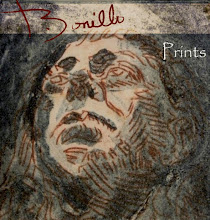
Abstract
Drawing is my way of expressing that which cannot be adequately expressed through any other means. I have drawn with charcoal to connect my feelings of grief over my husband’s death with a larger story of loss. I have drawn, and continue to draw, with black sewing thread on white shirts gathered from the closets of my deceased husband, from family, friends, and strangers. These sculptured drawings evolve as emotive gestures that flow through me as I look, listen, and respond to the energy I perceive from my ancestors, who sewed white-collared shirts to survive in America after immigrating from Lebanon; and from artists with whose work I engage.
This thesis weaves the narrative of the struggles of my ancestors with my story of the recent challenges I faced in the studio after my loss. I connect the writings of Roger Pogue Harrison and Alexander McQueen, who both speak of death as a vehicle for informing authorship, to the redefining of my artistic practice. I document how my challenges to first express my own personal grief, using the mark on the page, evolved into an effort to connect to a larger collective grief, the grief and struggles of my ancestors through a self-imposed ritual of “letting go” (Kentridge). I show my process of exchange in making as I examined, appropriated, and recaptured the marks and methods of other artists who embody the element of loss, such as Arnulf Rainer, William Kentridge, Cornelia Parker, Annette Lemieux, and Chiharu Shiota. I speak of James Elkins’s writings on the process of sight as an influence on my transition from two-dimensional drawings to the use of object as a canvas for three-dimensional portraiture. The outcome springs from a more observant way of looking and listening, and an art that reminds me that I am not self-authored, but am connected to and formed by the marks of those who came before me.
To view DrawnOnwarD in its entirety, click on the White Papers link to the right!



No comments:
Post a Comment